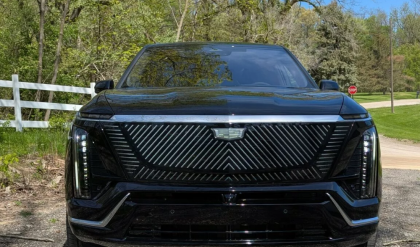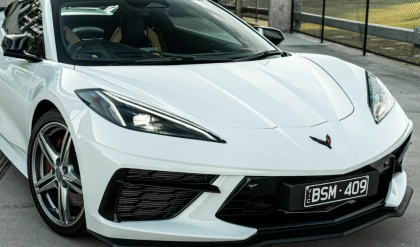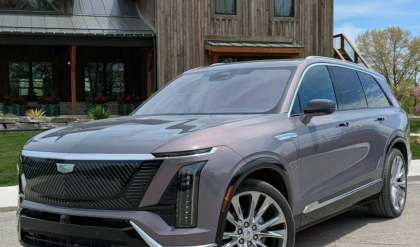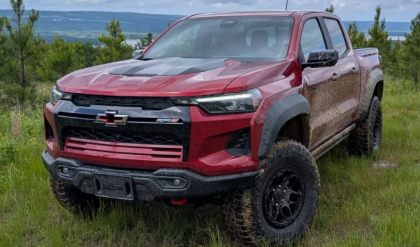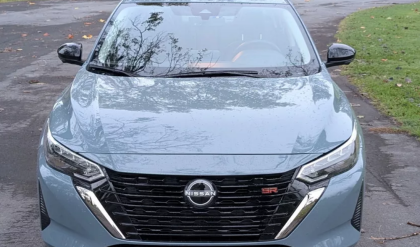Alright, folks, let’s talk about the Ford Ranger. If you’ve been following the pickup truck scene, especially Down Under, you know this thing isn’t just popular – it’s a phenomenon. Seriously, a decade ago, if you told someone a midsize ute would outsell the Toyota Hilux in Australia, they’d probably laugh you out of the pub. But here we are!

The latest-gen Ranger, which landed in 2022, just absolutely exploded. In 2023, it hit record sales, beating the Hilux by thousands, and by 2024, it was pulling nearly 10,000 units ahead. This isn’t just luck; a huge chunk of its development was done right here in Australia. As someone who loves a good truck, I had to see what all the fuss was about. So, I grabbed the keys to a popular 2025 Ranger Wildtrak for a week, and let me tell you, I wasn’t disappointed.
Quick Look: The Wildtrak Lowdown

-
Model: 2025 Ford Ranger Wildtrak
-
Size: It’s a proper midsize, designed for work and play.
-
Length: 5,389 mm (212.1 in.)
-
Width: 1,850 mm (72.8 in.)
-
Height: 1,848 mm (72.7 in.)
-
Wheelbase: 3,270 mm (128.7 in)
-
-
Weight: 2,388 kg (5,264 lbs)*
-
Engine: 2.0-liter bi-turbo diesel four-cylinder (My tester’s engine!)
-
Power: 206 hp (154 kW) / 369 lb-ft (500 Nm) of torque
-
0-62 mph (0-100 km/h): Around 9-10 seconds
-
Transmission: 10-speed automatic (Always busy!)
-
Fuel Economy: 7.6 l/100 km (30.9 US mpg)* combined (Manufacturer’s claim)
My Wildtrak: Getting to Know the Lineup
The Ranger lineup in Australia is massive, from basic work trucks to the insane Raptor. My tester was the Wildtrak, which is a seriously popular trim because it balances capability with comfort and tech. In Australia, the 2.0-liter Wildtrak I drove starts at AU$69,640. If you’re in the US, the Ranger family kicks off around $33,080, topping out with the Raptor at $55,820. So, the Wildtrak sits nicely in the upper-mid range.

My Wildtrak came with the 2.0-liter twin-turbo diesel four-cylinder engine. Ford calls it the ‘Panther,’ and honestly, it feels more like a well-trained domestic cat than a roaring wild one – but that’s not a bad thing! It puts out a healthy 206 hp and 369 lb-ft of torque, all managed by a smooth 10-speed automatic transmission. It’s got part-time four-wheel drive as standard, with low range and a locking rear diff, so you know it’s ready for some action. You can get a bigger 3.0-liter turbo-diesel V6 with more power (247 hp / 443 lb-ft) for an extra AU$5,400, but honestly, the 2.0-liter felt more than adequate for most things.
Inside the Wildtrak: It’s an SUV, Not Just a Truck!
This is where the new Ranger really shines. Forget those old-school, bare-bones truck cabins. The Wildtrak is loaded with so much tech, it genuinely feels like a modern SUV inside.
The star of the show is that big, portrait-oriented 12.0-inch infotainment screen. It runs Ford’s SYNC 4A system, and it’s excellent. Wireless Apple CarPlay and Android Auto are standard (hallelujah!), and while most controls are on the screen, it’s responsive, clear, and pretty easy to figure out.

If you tow, this screen is your best friend. It has a top-down tow hitch camera, an integrated trailer brake controller, and even a blind-spot monitoring system that actually adapts to your trailer’s length. That’s next-level stuff! Just a heads-up for US buyers: the blind-spot radar is in the taillights, which has unfortunately made them a target for thieves in some areas.
Most of the climate controls are on the screen too, but thankfully, Ford kept physical buttons and dials for temperature and fan speed. I still wish there were a few more physical HVAC controls, but it’s a good compromise. The digital gauge cluster is an 8.0-inch unit – good, but if you’ve seen the bigger 12.4-inch screen in the Ranger Raptor, you might wish for more customization and higher resolution here.

The rest of the cabin is a nice mix of durable black leather and plastic, jazzed up with bright orange contrast stitching. I spent almost 24 hours straight behind the wheel during my test, and the driver’s seat was incredibly comfortable for long hauls. A wireless charging pad is also a very welcome inclusion.
Since these trucks are now popular family vehicles, the second row is also surprisingly spacious and comfortable. You get individual air vents and a couple of USB ports, plus a handy storage cubby under one of the rear seats. It’s definitely a cabin built for real life.
The Drive: More SUV Than Truck, But Still Capable
You know what? This new Ranger, much like the new Mitsubishi Triton I recently drove, feels way more like an SUV to drive than the previous model. Yet, it still feels like it could conquer pretty much anything you throw at it.

The 2.0-liter turbo-diesel can be a bit noisy and rattly at low speeds, typical for diesels. But once you’re cruising on the highway, it settles down and is mostly unobtrusive. While the optional V6 has more grunt, I never felt like the four-cylinder lacked performance. Ford doesn’t give an official 0-100 km/h (0-62 mph) time, but it feels like a decent 9-10 seconds – totally adequate for a truck.
The 10-speed automatic transmission is a smooth operator. Some people might think 10 gears are overkill, but it just quietly does its job in the background, shifting quickly and efficiently around town. You can manually shift using little “plus” and “minus” buttons on the shifter, but it would be cooler if it had paddles like the Raptor.

Fuel economy is where the 2.0-liter is supposed to shine over the V6 (7.6 l/100 km vs. 8.4 l/100 km combined). But honestly, those manufacturer figures are always ambitious! During my time with the Wildtrak 2.0, I averaged around 8.9 l/100 km (26.4 US mpg), and that was mostly highway driving with cruise control on. I never saw it hit the 7s. So, factor that into your expectations.
Ford has massively improved the ride quality compared to the old Ranger. Even with a live-axle and leaf springs at the back (standard truck stuff), it’s surprisingly comfortable over most roads. I was actually a little surprised it wasn’t quite as plush as the new Triton, though. Adding some weight in the bed usually helps smooth out the ride a bit, but as it is, it’s good, just not great.
Of course, the Wildtrak isn’t meant to be a sports car. The steering feels a little light and doesn’t give a ton of feedback, and the brakes aren’t going to slam you forward. But for a truck, that’s par for the course.

Safety tech is plentiful, including adaptive cruise control and a driver attention monitoring system. Some folks found the monitoring system a bit too sensitive, but Ford’s rolled out an update for that, and I didn’t have any issues. My only annoyance? The active lane centering isn’t a simple button on the steering wheel; you have to dig into the settings menu on the big screen every time you want to turn it on. That’s a minor but frustrating design choice.
I didn’t get to tow anything during my test, but the Ranger’s rated for a solid 3,500 kg (7,716 lbs), which is right up there with its competitors. And it has plenty of driving modes, like Normal, Eco, Tow/Haul, Slippery, Mud/Ruts, and Sand, so you can tailor it to almost any situation.
Verdict: A Modern Legend, But Be Ready for the Price
All things considered, the 2025 Ford Ranger Wildtrak is a seriously impressive piece of kit. Its meteoric rise in popularity makes perfect sense. It feels genuinely more modern than many of its rivals, it’s packed with useful tech, and it’s incredibly versatile for both work and lifestyle.
However, those higher-spec models like the Wildtrak do come with a hefty price tag. That might explain why we’re starting to see more affordable Chinese alternatives, like the new BYD Shark, gaining traction.

But if you’re looking for a truck that truly lives up to its hype, blends SUV comfort with serious truck capability, and has a level of refinement that pushes the segment forward, the Ford Ranger Wildtrak is absolutely worth a look. It’s a modern legend for a reason.

